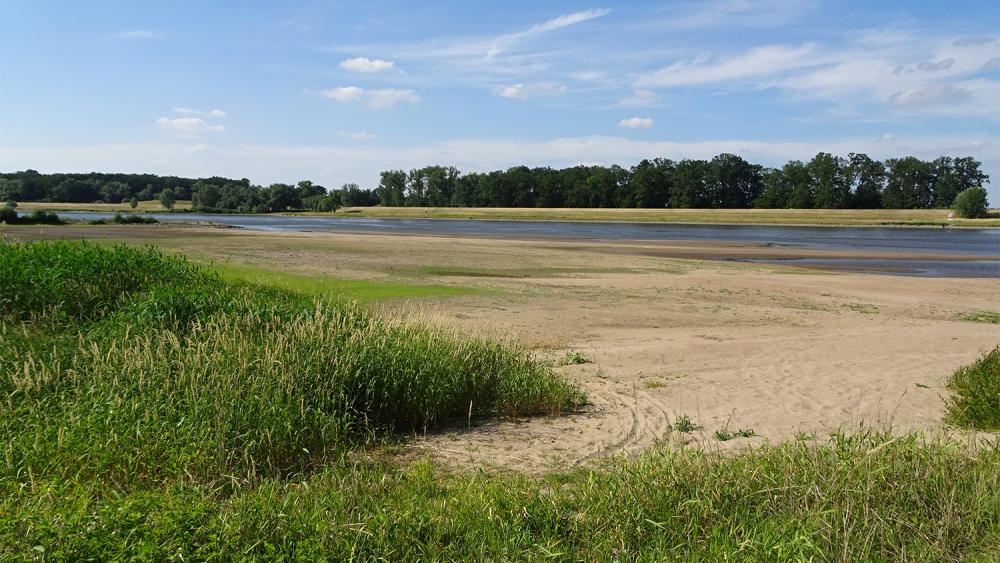
The Elbe near Schönburg in June 2018 with dry areas where carbon dioxide is produced. I Photo: Matthias Koschorreck
To investigate the role of intermittently dry inland waters for CO2-emissions, a core team of six German and Spanish scientists from the Helmholtz Centre for Environmental Research (UFZ) in Magdeburg, the Leibniz-Institute of Freshwater Ecology and Inland Fisheries (IGB) and the Catalan Institute for Water Research (ICRA) has launched the dryflux research project.
24 research teams investigated 196 different sites on every continent, except Antarctica. Each group carried out measurements of carbon dioxide levels in dry areas of at least three freshwater systems in their region – river, lake, reservoir or pond. They also took samples of the dry sediment at the same location and measured its temperature, humidity, organic matter and salt content, as well as pH.
"We found significant carbon dioxide emissions from dry areas of inland waters across all climate zones," says Phillip Keller, first author of the study from the UFZ. "So this really is a global phenomenon."
More "breathing" can take place in the dry areas than in the water
The researchers also discovered that areal emissions are in fact often higher than typical emissions from water surfaces. "We were able to show that dry areas of inland waters actually account for a significant proportion of total carbon dioxide emissions from these freshwater systems," says Dr. Matthias Koschorreck, head of the study and researcher at the UFZ. "If you take this into account for global calculations of inland waters, the carbon dioxide emissions increase by six percent."
IGB-researcher Prof. Dr. Hans-Peter Grossart is investigating microorganisms in fresh and brackish waters: "It is the same as for humans and other living beings – carbon dioxide is produced during respiration. This climate-active gas is also produced during the respiration processes of microorganisms in water areas that are drying up. The greater the food supply – the organic matter in the soil – and the better the conditions such as high temperature and soil moisture, the more active they are and the more carbon dioxide is released into the atmosphere". From the results of the study, the researchers concluded that the factors responsible for carbon dioxide release are essentially the same all over the globe. The interaction of local conditions like temperature, moisture and the organic matter content of the sediments is crucial, and it has a bigger influence than regional climate conditions.
Greenhouse gas emissions from freshwater systems are underestimated
Hans-Peter Grossart has already led several studies on the subject of "Water as a source of greenhouse gases": "At the IGB we have already been able to show in several studies that freshwater systems are a previously underestimated source of climate-relevant gases such as methane or carbon dioxide. One recent result was that cyanobacteria – blue-green algae – form methane even in the presence of oxygen. Increasing blue-green algae blooms could therefore boost climate change. And in another study, we were able to show that even lakes with good water quality and oxic conditions can produce methane. If we take all these results together, it becomes clear that inland waters are a source of potent greenhouse gases that has so far received little attention."
Matthias Koschorreck shares that view: "Our study shows that carbon dioxide emissions from inland waters have been significantly underestimated up until now. We hope that our work will help ensure that dry areas of freshwater systems are included in future calculations. With the progression of climate change, more surface waters are probably drying out and thus, CO2 emissions will likely increase."
The text is based on a press release of the UFZ.





